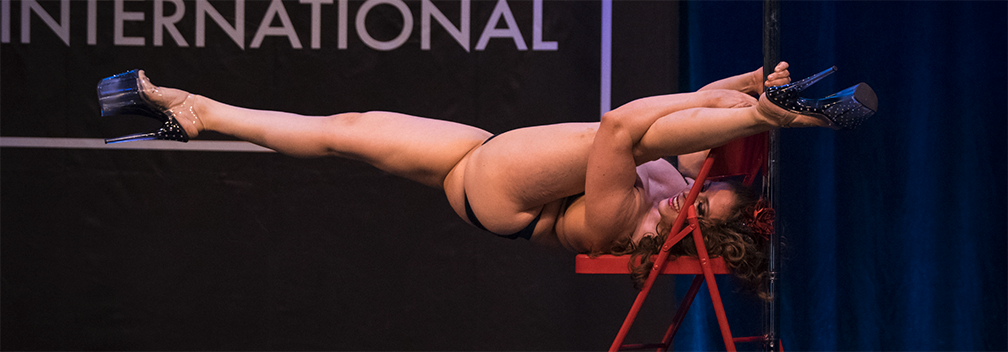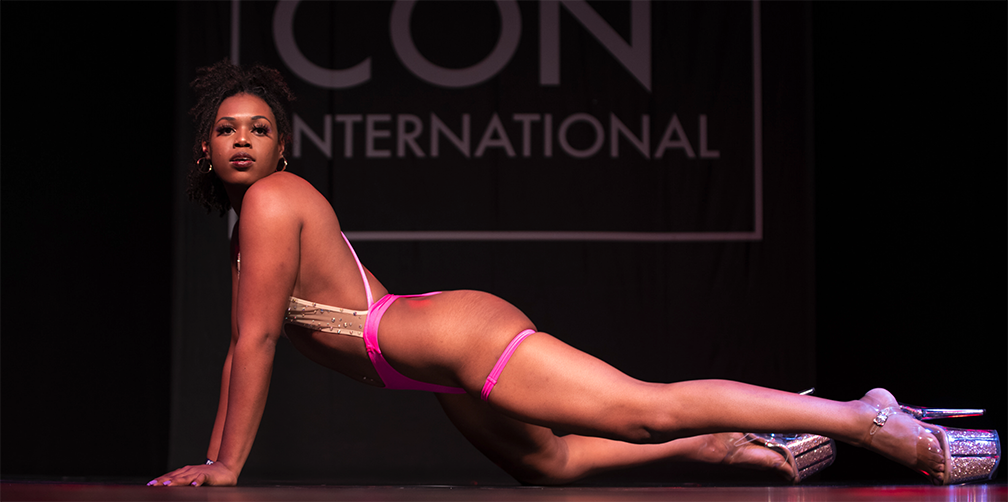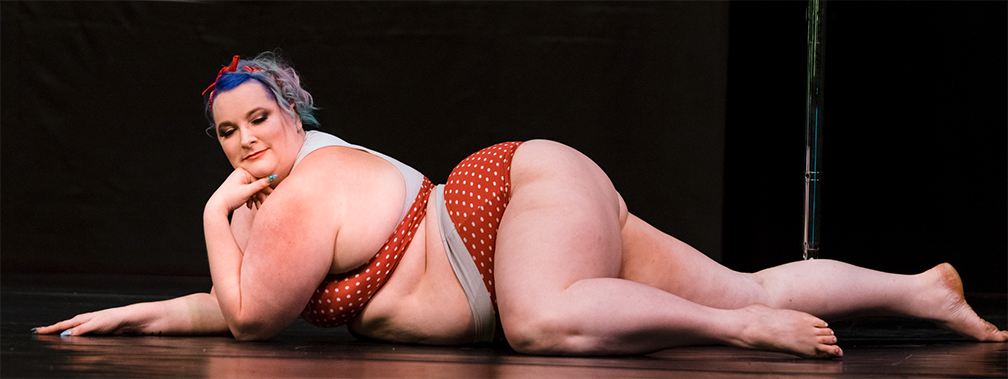Get Your Booty to the Poll (GYBTTP) was a 2020 campaign that used pole dance…
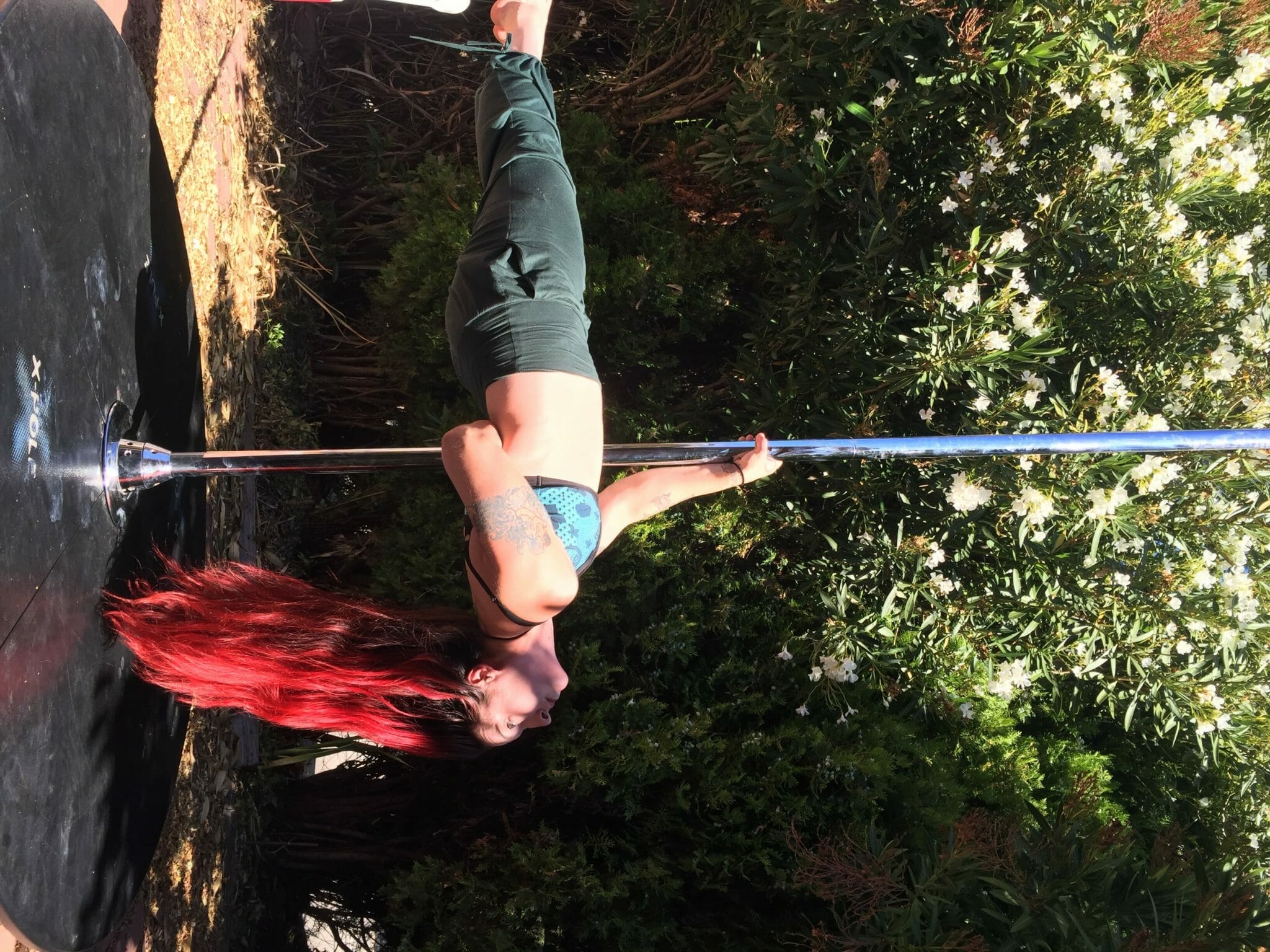
Keep Your Pants On!
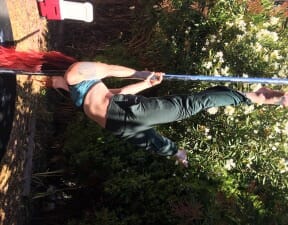
When I first started pole dancing, I always came to class in my tiny pole shorts and tank top. Now, I always come to my studio in pants (shorts underneath), and I try to keep my pants ON for as long as I possibly can. I want to discuss some reasons why you might want to wear pants the next time you go class and how to design a routine specifically for a costume with leg coverage.
We all know the feeling of apprehension when walking into an ice-cold studio in the morning of a winter month. The poles are freezing, the floor is chilly and makes your muscles tight, and the last thing you want to do is remove any clothing. Last winter, I was booked for several outdoor shows. One time I was promised access to an outdoor heating element which was nowhere to be found when I got there. Needless to say, I did not particularly enjoy these shows. One time it was so cold I could feel myself shivering throughout my act. After that, I decided I would develop choreography specifically for pants. I often teach this type of choreography to my students in winter classes too, so that everyone can stay warm and comfortable.
There are other reasons why you might want to wear pants. Often, parents complain that pole classes aren’t kid friendly, or that a pole act would not be appropriate because pole dancers wear small costumes. While I find these complaints somewhat irritating when I live in a beach town and what I perform in is ALWAYS bigger than a bathing suit, giving potential clients the option of requesting bigger attire is sometimes helpful.
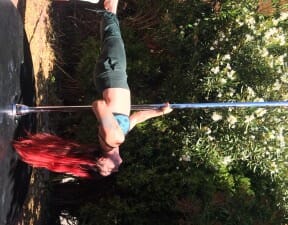
Along those lines, many new students aren’t even comfortable in shorts. I’ve had quite a few students express relief when I told them they didn’t need to go down to booty shorts and a sports bra. This is also a good option for those first day students who don’t know we use our skin to grip metal poles and come to class in yoga pants
Finally, I like to have the freedom to choose whatever costume best fits my character. Along those lines, maybe the director of the show I’m in or a photographer has specifically requested a certain costume. It’s great to have the versatility to accommodate that.
Now let’s talk about what you can do in pants (assuming you aren’t wearing those super sticky faux leather pants). Obviously, knee grips and thigh holds are out (at least in the air — knee grips at the lower third level can work as long as you also have contact with the floor). However, hand grips, elbow grips, lever grips, armpit grips, shoulder mounts, foot grips (starfish anyone?) are totally fine. Make sure you are totally comfortable with the tricks you try without pants on before trying them with pants (unless you’re doing slide-y floorwork). Obviously, all these tricks are going to be harder and more tiring if you have less skin available to you.
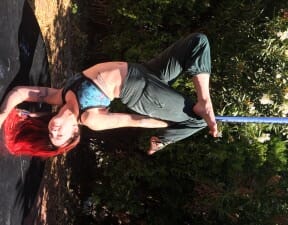
Strength moves are great to show off when you don’t have access to the skin on your legs. Iron X’s, iguana grip poses/planche, tabletop, air-walks, handstands, etc. work great (Photo 1: Iguana Grip; Photo 2: Tabletop; Photo 3: Forearm Stand Variation). Just keep in mind that you will most likely have to enter these tricks from the ground and exit safely back on the ground. For example, you’ll probably have to get into your ayesha from a handspring or deadlift instead of from an inside leg hang. You may find that you can do a basic climb up the pole too (it’s much harder — be careful!), but this would be a great chance to train your hand-over-hand climb. Just keep in mind that you won’t really be able to rest once you get above the ground. The closest thing I’ve found to a rest pose is a armpit grip pose such as a teddy. With that being said, make sure to save some energy to dismount.
Pole tumbling tricks work well in pants. Back tucks, walk-overs, shoulder mount flips and so forth are pretty much the same, assuming you’re starting on the ground. Try doing a walk-over variation of a yogi handstand. Make sure to have a strong grip on the pole with your inside hand and let your back arch. Your hand on the ground will need to adjust a little bit — keep it loose. If you try a back-walkover, make sure to push hard from your shoulders.
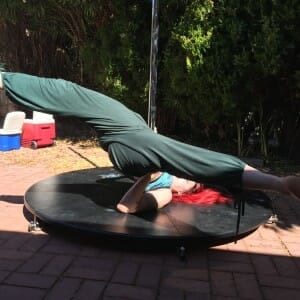
Of course, floorwork is great in pants! Pants protect your knees a bit and allow you to easily slide on the floor. I’ve even seen “Pole Skating” classes designed just for this. Some of my favorite tricks are toe fans, shoulder rolls/stands (Photo 4: Shoulder Stand Split), chest stands (for a harder entry, try doing a yogi handstand, and carefully lowering yourself down onto your chest/chin), and back splits on the pole.
Spins are an option too. If I have pants on, I find that static spinning usually works a bit better, especially for spins involving leg contact with the pole. Roundabouts and juliet spins are particularly fun!
You can also try out those pleather pants, but they’re REALLY STICKY! You won’t really be able to slide or static spin at all. If you use them, you’re better off sticking to spin pole (no pun intended).
Just one more comment: if you’re planning on working on flexibility (which you should do during every training session!), you should bring pants. Unless dropping into a flat, square split is super easy for you, you need to be able to slide easily on the floor into your deepest split position. Pants and socks will help this. If you’re sticking on the floor at all, you will end up engaging muscles you are trying to stretch. This won’t help you get your split! I always request that my students wear pants over their shorts for this reason.
Please share photos of videos of your training sessions in pants!
Latest posts by Jody Ryker (see all)
- Putting on Your First Pole Show: Part 1 - July 14, 2017
- Pole Inspiration - May 5, 2017
- Finding the Right Pole Teacher - March 3, 2017
